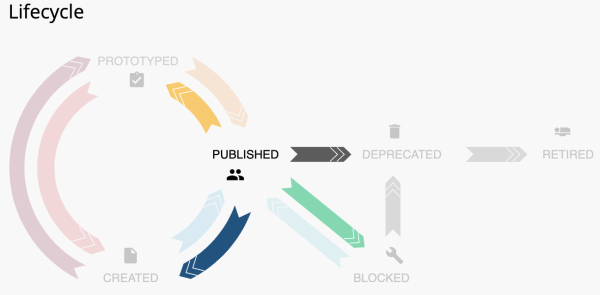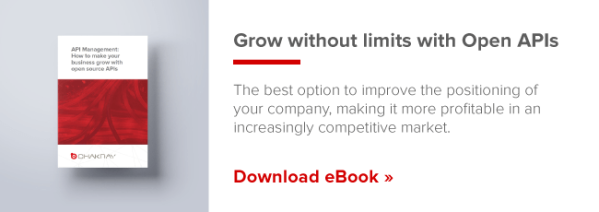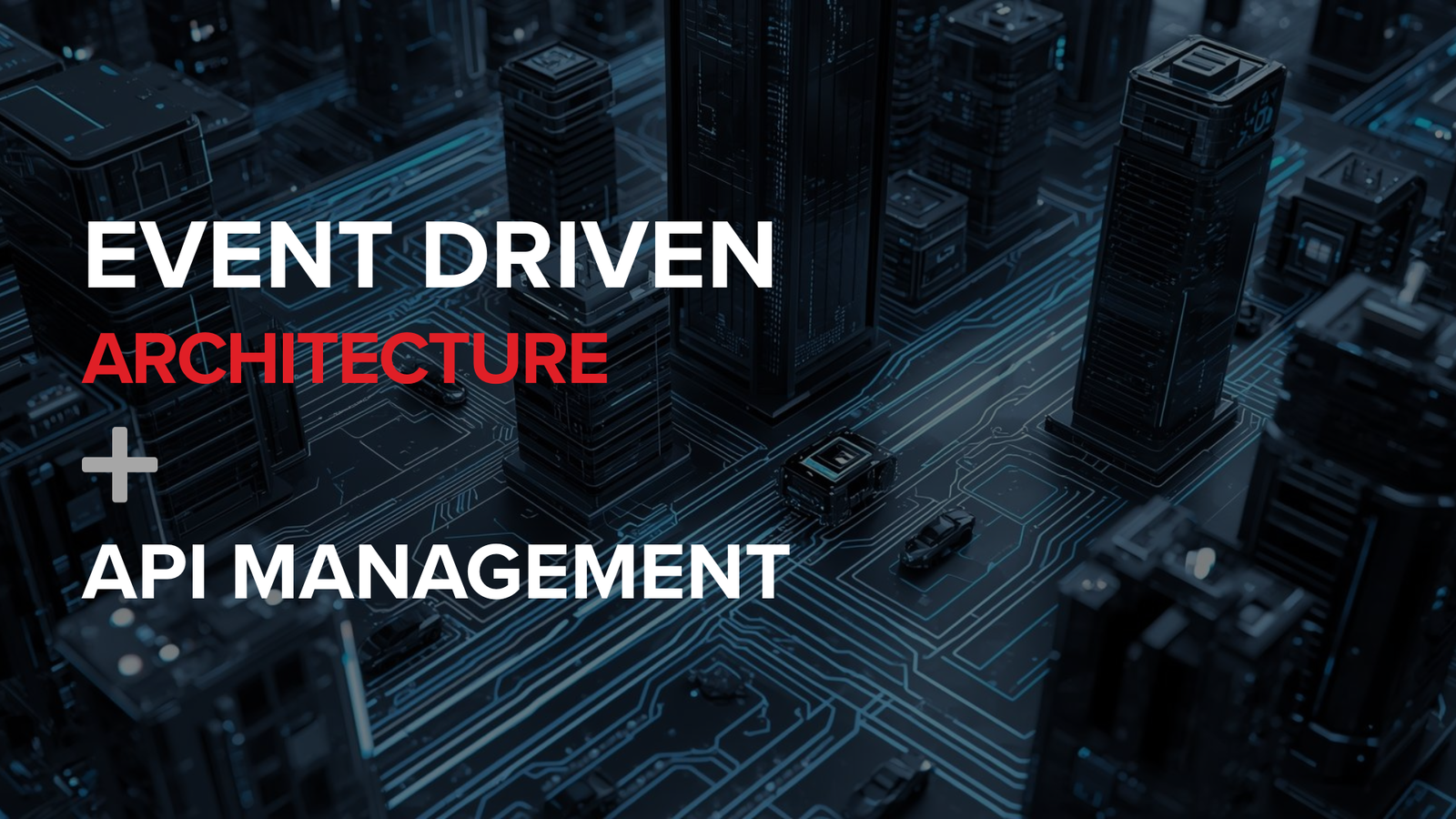- What is an API?
- What is API Management and API Manager?
- Why do you need to select WSO2 API Manager?
- What is API Lifecycle Management?
- Why is API Lifecycle Management a MUST for your organization?
- WSO2 API Manager Lifecycle Management
- Why do you need to use WSO2 API Manager for your organization’s API Lifecycle Management?
- Conclusion
What is an API?
An API (Application Programming Interface) is a set of functions that allows users or applications to access data and interact with external systems or services. An API defines how other applications can use external systems or services. That means API defines what kind of requests can be made, compatible data formats, the data transformation flows, response handling, etc. Simply, an API sends the user’s request to an external system or service and delivers the system’s or service’s response back to the user.
APIs allow applications or services to communicate with other applications or services without knowing how those are implemented. This will simplify app development and save lots of time and money. Also, APIs give flexibility, opportunities for innovation, better administration, and efficiency. APIs allow systems to integrate with other systems in an atomic, compatible and agile manner efficiently.
What is API Management and API Manager?
API Management is the process of designing, creating, publishing, testing, documenting and analyzing APIs in a managed and secure environment. By API Management, an organization can provide secure internal and external APIs to its consumers.
These are the main factors that need to be considered in API Management.
- API Lifecycle Management
- API Security
- API Governance
- Deployment Flexibility
- API Monetization
- Developer Community Building
API Manager is a software or a product responsible for above mentioned capabilities of API management.
Why do you need to select WSO2 API Manager?
WSO2 API Manager is a fully open source solution with all above-mentioned API management capabilities (Lifecycle Management, Security, Governance, Deployment Flexibility, Monetization and Developer Community Building).
WSO2 API Manager is a comprehensive solution for designing and prototyping APIs, publishing and governing the APIs, access controlling and enforcing security of APIs, creating and managing developer communities, managing and scaling the API traffic, monitoring and monetization of APIs. Also this product is easily pluggable, extensible and the themable. WSO2 API Manager can be deployed on-prem infrastructure, cloud or as a hybrid solution where its components can be deployed across on-prem and multiple clouds.

What is API Lifecycle Management?
API Lifecycle management is a key factor in API management. API Lifecycle Management is managing all steps in a life of an API, from creation to retirement. This provides the current status of the API and how to manage the stages of an API from start to end. Typical lifecycle of an API consists of five states.
- Planning and Designing the API
- Developing the API
- Testing the API
- Deploying the API
- Retiring the API
But this may differ depending on the organizational requirements.
Why is API Lifecycle Management a MUST for your organization?
API Lifecycle management in the organization can be used to accomplish business goals and rapid business growth. API Lifecycle Management is a MUST have in your organization due to the following reasons.
-
Flexibility of integration
Proper API Lifecycle management is very important for providing the flexibility of integration between APIs with internal and external environments. With API Lifecycle management organizations can have fully functional workflows to represent the status of the APIs. This will enable effective collaboration between organizations and stakeholders. This enables business ecosystems where more people can contribute to an organization’s success.
-
Tracking the status of the APIs
Executing the full API lifecycle from the inception stage to the retirement stage of APIs is very important. By executing the full API lifecycle, organizations can track status of APIs throughout the API lifecycle whether the development process is agile or waterfall. This is very important in order to manage the cost and time. These statistics can be used for the organization’s future business plans.
-
Improve alignment between business and IT
Aligning your business and IT will increase the profitability of the organization, improve the collaboration among various teams, reduce time and help for strategic technology transformation. APIs are the building blocks of connecting various different systems or services. Organizations can align your business requirements and identify gaps among those and provide solutions in the early stages by having a proper API lifecycle management in place.
-
Standardizing the APIs
API standardization is a must have in every project whether it is a small or enterprise grade project. This causes savings time and money in implementation and also ensures great developer experience. Formulation of standardizing APIs is one main requirement of API lifecycle management. By this it is possible to plan and design APIs according to industry standards. This will help to increase the sustainability of API programs.
-
Support API evolution
API evolution is inevitable in today’s world due to rapid change of technology and consumer demands. Your business will not be able to survive in the market If you would be unable to address these customer demands and technology enhancements. With API lifecycle management you will be able to support and formalize the evolving APIs in order to sustain your business and growth of your business. But it is quite challenging to do these changes without affecting existing customer experience. API versioning, a major part of API lifecycle management can be used to accommodate the identified changes very fast without affecting customer user experience.
-
Supporting backward compatibility
Running multiple versions of APIs in production environments simultaneously is very crustial either to accommodate older clients or support different technologies. Running multiple versions in parallel can be achieved using proper API lifecycle management in place in your organization.
-
Accommodating rollback strategies
Accommodating rollback strategies of APIs is very important to align with the timelines, avoid erroneous behaviors and adapt sudden business changes. By using API lifecycle management, status of APIs can be reverted back or demoted to the previous status.
-
Early promotion and testing of APIs
Early promotion and testing of APIs are very important to complete the projects in a planned timeline. In this case, it is possible to have mockup or prototype APIs with proper API lifecycle management even though backend systems are not ready. Application developers can continue their development and do the testing using these mockup or prototype APIs. Due to this approach all the teams can work parallel and complete their work without waiting for other parties to complete their work.
-
Governance of your organization’s API
API governance enables consistency across APIs which helps to save time and money,
Bring value to your business and allow components to be reused. Tracking the lifecycle of each API from inception to retirement is need to govern the APIs
-
Attract application developers to adopt APIs
Application developers can be attracted to adapt your organization’s APIs by introducing proper industry standards and clear separation of stages like development and testing. These things can be achieved using proper API lifecycle management in place in your organization’s api development.
-
Notify users when there changes in the APIs
Notifying api subscribers when there are changes in the APIs are very important, so they can align those with their business requirement and get the maximum usage of these APIs.
WSO2 API Manager Lifecycle Management
API Lifecycle Management is a key factor in API management. WSO2 API Manager provides a comprehensive set of features for API Lifecycle Management. WSO2 API Manager has the following capabilities of API Lifecycle Management which you can use to achieve your organizational goals and rapid growth of your business. You can achieve all the above mentioned capabilities using WSO2 API Manager Lifecycle Management capabilities.
In WSO2 API Manager, there are six predefined states to represent the stages of API starting from developing API to retirement of the API. It is possible to identify what is the current state of the API in the API lifecycle using these six states.
These are the six default states provided by API lifecycle management:

- CREATED – The API has been created, but it is not available for usage.
- PROTOTYPED – An API prototype is created for the purpose of early promotion and testing. By deploying APIs as prototypes, subscribers can try out and use these prototype APIs for the implementation early as possible without a subscription.
- PUBLISHED – The API is ready to be used by users in the Developer Portal.
- BLOCKED – The API is temporarily blocked from being used. A publisher can publish the API from the BLOCKED state.
- DEPRECATED – The old version of the API is DEPRECATED when a newer version of the API is created and PUBLISHED.
- RETIRED – The API is no longer in use and has been moved to the RETIRED state.
Standardizing the APIs are very important when it comes to the management and tracking the status of the APIs. Using these states, organizations can define standards of their APIs according to the industry standards and business requirements. If you cannot achieve your business requirement with these default states, WSO2 API Manager provides the capability of customizing the existing lifecycle or adding new life cycles as extensions.
- API LIfecycle Customization and Extension
Set of specific actions happens for each state transition and also a defined set of items checked before state transition. But if your organization needs more actions or different states to cater your organization needs, you can extend or customize the API life cycle with the WSO2 registry based life cycle in API Manager. This lifecycle extensibility feature is available only after WSO2 API Manager version 1.10.0.

- API Versioning
API versioning is also a very important factor in API Lifecycle Management in order to support the evolving APIs. With the time new requirements come with business changes, technology enhancement, etc. When you want to change the published API’s behaviour to accommodate the new requirements or changes, It is not recommended to change the published API since it has active subscribers. As a solution to this you can create a new version of the same API and publish it as a prototype API and deprecate the older version. Later you can promote the new API as a published API and retire the older version. With this approach you can transmit the current subscribers to the latest version without any problem.
At the same time WSO2 API Manager has the capability of notifying current subscribers via email when the new version of the API is available.
By using multiple versions of the APIs in parallel, organizations can cater the requirements of evolving APIs without disturbing customer experience and smoothly transfer the customers into new versions of the APIs.
Why do you need to use WSO2 API Manager for your organization’s API Lifecycle Management?
You should use WSO2 API Manager for the following reasons:
-
Flexibility of integration
WSO2 API Manager Lifecycle management provides a set of features to improve the flexibility of integration. With API Lifecycle management organizations can have fully functional workflows to represent the status of the APIs. This will enable effective collaboration between organizations and stakeholders.
-
Tracking the status of the APIs
In WSO2 API Manager, there are six predefined states to represent the stages of API starting from developing API to retirement of the API. It is possible to identify what is the current state of the API in the API lifecycle using these six states.
Also you have the capability of customizing these states according to your organizational requirement and you can define your own states using the extension option. These states can be used to track the status of the APIs.
-
Improve alignment between business and IT
Organizations can align your business requirements and identify gaps among those and provide solutions in the early stages by adhering the full API lifecycle. In WSO2 API Manager organizations can identify the gaps and improvements in initial stages (CREATED or PROTOTYPED) and address those concerns early as possible.
-
Standardizing the APIs
Standardizing the APIs are very important when it comes to the management and tracking the status of the APIs. Using the states in WSO2 API Manager lifecycle, organizations can define standards of their APIs according to the industry standards and business requirements. If you cannot achieve your business requirement with these default states, WSO2 API Manager provides the capability of customizing the existing lifecycle or adding new life cycles as extensions.
-
Support API evolution
By using API versioning, organizations can cater the requirements of evolving APIs without disturbing customer experience and smoothly transfer the customers into new versions of the APIs. When you want to change the published API’s behaviour to accommodate the new requirements or changes, It is not recommended to change the published API since it has active subscribers. As a solution to this you can create a new version of the same API and publish it as a prototype API and deprecate the older version. Later you can promote the new API as a published API and retire the older version. With this approach you can transmit the current subscribers to the latest version without any problem.
-
Supporting backward compatibility
Running multiple versions of APIs in production environments simultaneously is very crustial either to accommodate older clients or different technologies. WSO2 API Manager supports running multiple versions simultaneously and you can achieve backward compatibility using that.
-
Accommodating rollback strategies
In WSO2 API Manager, status of APIs can be reverted back or demoted to the previous status. With this functionality organizations can adhere to their API rollback strategy.
-
Early promotion and testing of APIs
Early promotion and testing can be done with prototype APIs in WSO2 API Manager. Prototype APIs are APIs with inline scripts for testing purposes. These APIs do not contain the actual implementation. Application developers can continue their development and do the testing using these prototype APIs.
-
Governance of your organization’s API
API governance can be achieved using basic lifecycle management (e.g., created, published, deprecated, retired) included in the WSO2 API Manager. Also it is possible to integrate with the WSO2 Governance registry lifecycle, which offers advanced workflow and approval management.
-
Attract application developers to adopt APIs
Application developers can be attracted to adapt your organization’s by introducing proper industry standards and clear separation of stages like development and testing using WSO2 API Manager.
-
Notify users when there changes in the APIs
Using WSO2 API Manager, you can notify current subscribers via email when the new version of the API is available. Also If you want to send a different type of notification, you can write a custom extension based on your requirement.
Conclusion
API lifecycle management is a must have in your organization in order to achieve the business goals and increase your business growth. You can manage your organization’s API lifecycle effectively using WSO2 API Manager. WSO2 API Manager is a fully open source solution with a comprehensive set of API management capabilities. WSO2 API Manager provides a rich set of features for API lifecycle management.







